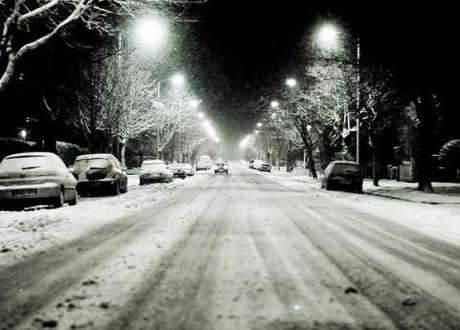 Driving at night through snow. Photo credit: Steve.M http://flic.kr/p/7tJJif
Driving at night through snow. Photo credit: Steve.M http://flic.kr/p/7tJJif
The background
Driving through heavy rainfall or a snow shower during the night is slow-going and hazardous. It’s with this in mind that researchers have developed a new headlight that can “see” through rain and snow. It’s at prototype stage but, if everything goes to plan, it should be good to go in three years.
The scientists behind the research claim their prototype reduces the visibility of rain four metres away from the light source by about 70 percent when a car is moving at 30 kilometres per hour. And it apparently reduces the visibility of snowflakes, which drop more slowly and tend to be larger than raindrops, by 60 percent.
How it works
Scientific American explained how the “reactive illumination” smart headlight system works: “The system uses a digital camera to track the motion of individual raindrops or snowflakes and then applies a computer algorithm to predict where each bit of precipitation will be a few milliseconds later. It deactivates bulbs that would otherwise illuminate the drops or flakes in their predicted positions.”
Impressive but impractical
Slate said the idea is great in principle but really not there yet; it pointed out that, presently, it only works if you’re willing to drive at just 18 mph. “This prototype is currently only able to do its trick 50 times per second – impressive but impractical. Also, headlights in an oncoming car will confuse the smart system. But in a few years our headlight technology could be pretty golden,” enthused Slate. ”Now, can we get them to make one that automatically turns off the high beams when another car approaches?” wondered Slate. “Human drivers can be so dim.”

